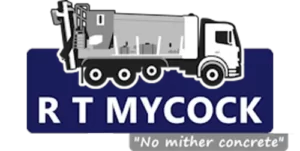Fence posts are the unsung heroes of any fencing system, quietly providing the structural foundation that ensures privacy, security, and aesthetic appeal to properties. Among the various materials available for fence posts, concrete stands as a stalwart choice, cherished for its durability and resilience. In this comprehensive guide tailored to the discerning UK audience, we delve into the many facets of concrete fence posts, exploring their advantages, types, installation, and maintenance, all while considering the economic and environmental implications.
Advantages of Concrete Fence Posts
Durability and Longevity: The hallmark of concrete fence posts in the UK is their impressive resistance to weathering and decay. Our oft-unpredictable British weather is no match for the robust nature of concrete. Whether enduring the ceaseless rain of the Scottish Highlands or the coastal gales of Cornwall, concrete fence posts remain steadfast. Their low maintenance requirements further sweeten the deal, offering peace of mind to property owners.
Strength and Stability: In a land where strong winds and occasional storms are part of the climate, the load-bearing capacity of concrete is invaluable. These posts can withstand not only the forces of nature but also the impacts of wayward footballs and errant pets. Stability and reliability are the cornerstones of concrete fence posts.
Versatility in Fencing Applications: The UK’s diverse topography demands versatile fencing solutions. Concrete fence posts rise to the occasion, seamlessly accommodating various fence types and conforming to the unique contours of your land.
Types of Concrete Fence Posts
In the UK, you’ll find an array of concrete fence post options to suit your specific needs. From standard precast concrete posts to the highly practical H-shaped posts and slotted posts designed for panel fencing, there’s a post for every purpose. Additionally, specialty posts are available to cater to unique demands, and customization options allow for tailored solutions that harmonize with your property’s aesthetics.
Installation and Maintenance
Installing concrete fence posts in the UK requires careful planning and execution, given the country’s distinct weather patterns. Site preparation is key, ensuring a stable foundation. Proper spacing, alignment, and securing techniques are essential during installation. Attaching fencing materials securely, whether through nails, screws, or clips, guarantees long-term stability. Regular maintenance, including damage inspections and, if necessary, cleaning and repainting, is crucial to preserving the posts’ integrity.
Cost Considerations
Concrete fence posts may necessitate a slightly higher initial investment, but they provide substantial long-term cost savings. This is especially evident in the UK, where the climate can be harsh on fencing materials. Comparing concrete posts with alternatives over the years reveals their superior return on investment.
Environmental Considerations
In an era where environmental responsibility is paramount, concrete fence posts offer a sustainable choice. They often incorporate recycled content and are manufactured using energy-efficient processes. Reducing the carbon footprint can be achieved by choosing local suppliers and practicing responsible disposal and recycling.
Case Studies
Throughout the UK, property owners have embraced concrete fence posts with remarkable results. These case studies illuminate the benefits and challenges faced, offering valuable insights and best practices for those considering this robust fencing solution.
Conclusion
Concrete fence posts, a timeless choice with unmatched durability, versatility, and strength, remain a steadfast option for UK property owners. By understanding their advantages, types, installation, and maintenance, as well as considering the economic and environmental implications, individuals can make informed decisions that stand the test of time. In an ever-changing world, the enduring appeal of concrete in the realm of fencing is undeniable.
